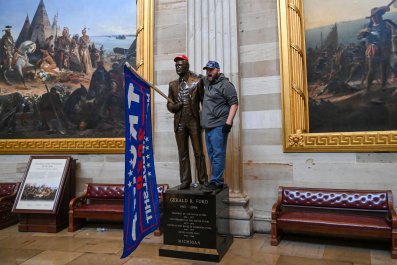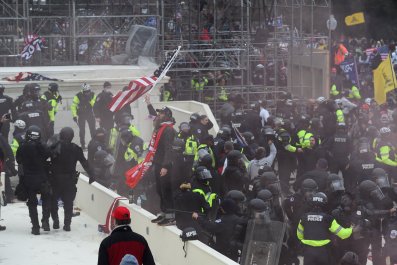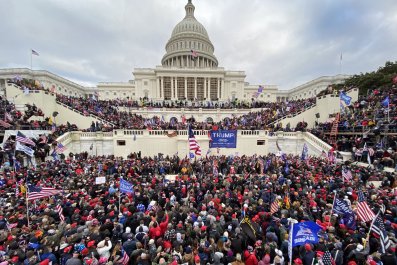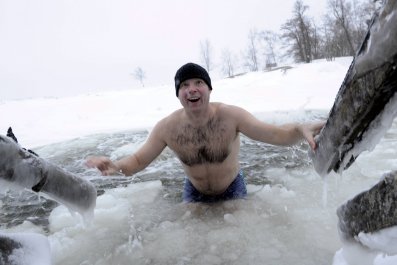They knew it could happen. They feared that Donald Trump would pull a "Samson," bringing down the whole house on top of him in the two weeks before he left the White House. Officials from the FBI, the Secret Service, Homeland Security, the District of Columbia government, the Pentagon, the National Guard, and the Joint Task Force–National Capital Region who spoke to Newsweek last weekend on condition of anonymity in the days before the Capitol Hill riot, all talked about the potential for protesters and militias and paramilitary goons—egged on by the president—to storm Capitol Hill and even the Capitol building itself.
A half-dozen sources spoke openly about this very scenario: that the mob would attack the "People's House" and that somehow the system would break down. They speculated that this could occur because of the president's treasonous behavior, because of leadership deficiencies in the federal government and Congress, because of the extreme partisanship of the moment, and because no one was truly ready and everyone was looking the wrong way.
The blame was spread around, with the FBI dismissing the Department of Homeland Security as a bunch of amateurs and thugs; the military shaking their heads about President Trump and an absent White House leadership; Homeland Security department members mocking the District of Columbia's mayor, Attorney General and police force; and everyone making clear that "the problem" was someone else's.
It was clear that the very law enforcement and security people who in theory were responsible for maintaining order in our capital city weren't ready, weren't well led, weren't organized properly, and most ominous of all, possibly weren't impartial.

How We Got Here
There are multiple causes for this historic failure.
The patchwork quilt of roles and responsibilities created post-9/11, and the immense public illiteracy regarding all things national security, have weakened America.
Many people in official Washington had tolerated and even humored President Trump's sedition and incitement to riot. FBI sources said the White House didn't order a review of January 6 or any new security measures.
It wasn't doing those things, the sources said, because presidential aides were afraid that any movement might provoke Donald Trump to do something even worse than whatever he was already planning.
Nor, despite the obvious threat of violence, was the Department of Homeland Security revisiting the so-called inauguration period "National Security Special Event" officially covers January 15-21. That would have put the Secret Service in charge of overall federal response.
Sources from other departments said the DHS—which openly used its mammoth army of law enforcement officers to suppress protests in Portland and other cities—made itself virtually absent. The Acting Secretary of Homeland Security Chad Wolf was actually in the Middle East, evidently not thinking that the threat was severe enough for him to be in Washington.
In June, when protests didn't involve pro-Trump, right wing mobs but were instead about racial justice, the DHS came out in force, its law enforcement arms, now the largest in the federal government—Secret Service agents, ICE, Customs and Border Protection, Homeland Security Investigations, Federal Air Marshals and even the Federal Protective Service—all for the concocted mission to protect monuments on the Mall and government buildings.
But both FBI and military sources said they thought Homeland Security was politically compromised—"in the president's camp," one source said—perhaps even uninterested in any show of force, let alone carrying out their mission.
Several sources said before last week that they feared that the U.S. Capitol Police—with a strength of more than 2,000 law enforcement officers—might not act, or might be intentionally stood down, because many Congressional Republican leaders wanted the mob to amplify their shrinking voices that the election was illegitimate. There has been no confirmation of this claim. But one can't deny that the Congressional police force failed to do its job—while the intruders were allowed to run wild, and then so few were arrested.
Within a day, the head of the Capitol Police and the House and Senate sergeant-at-arms had all resigned. Investigations are sure to follow.
In the end it fell to the Department of Justice to "coordinate" the federal response, and FBI sources told Newsweek that the Bureau was closely watching the various protestors converging on the city, that the Bureau had a good sense of the protestors, the size of the crowd, the leaders, and the dangers. Their intelligence, nevertheless, obviously apparently did not anticipate what the news media was openly speculating about and what the president and his supporters were publicly tweeting. There was a monumental domestic intelligence failure as well.
The One Standout
The District of Columbia government was the only prepared and ready force on Wednesday. Mayor Muriel Bowser activated 340 District National Guardsmen and women before January 6. In keeping with a Pentagon desire not to get involved in the election or to use soldiers to enforce the law, the D.C. Guard was kept unarmed and assigned to traffic control and other non-lethal duties to relieve more police officers of the Metropolitan Police Department—3,800 strong, the sixth largest municipal police department in the nation—to enforce the laws.
The riots—and the District's response—underscored the argument for making D.C. a state, so that the mayor wouldn't have to ask permission of many layers in the Pentagon to activate the DC Guard.
And finally there's the Pentagon. Donald Trump's walk into Lafayette Park last June, accompanied by a gaggle of federal, National Guard and local police forces, jolted the U.S. military. Chairman of the Joint Chiefs of Staff Gen. Mark Milley, in uniform, joined the president's entourage, giving the impression that the uniformed military supported Trump and the forces surrounding him. Gen. Milley was pummeled for his "loss of situational awareness," for being there. He publicly apologized.
That incident and Milley's apology shifted Pentagon culture; ranking officers firmly rejected talk of martial law and openly declared that the U.S. armed forces had no role to play in the election or the transition. Military sources say the hands-off stance and a conviction to play no role even held back the standing Joint Task Force responsible for civil disturbances in the District, and then caused additional Guad and active duty forces to be unavailable until the next day.
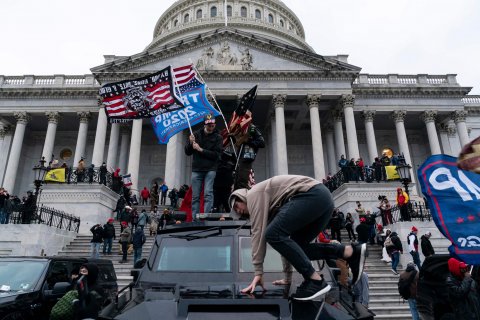
Whatever now happens to repair the organizational weaknesses, sources say that two things are sure. First, security of the Capitol, and greater restrictions on legitimate protest activity, will surely be increased. and second, the impression will now be created that "the military" is the only institution that can be trusted, that it is the only one that can and will always save the day.
Everyone now talks about restoring the rule of law and ensuring accountability for protecting America's democracy, that the post-Trump reforms must be as dramatic as the ones that followed 9/11. That "the military is the only answer" is not just a false belief: It also weakens the civil institutions on which our nation depends.
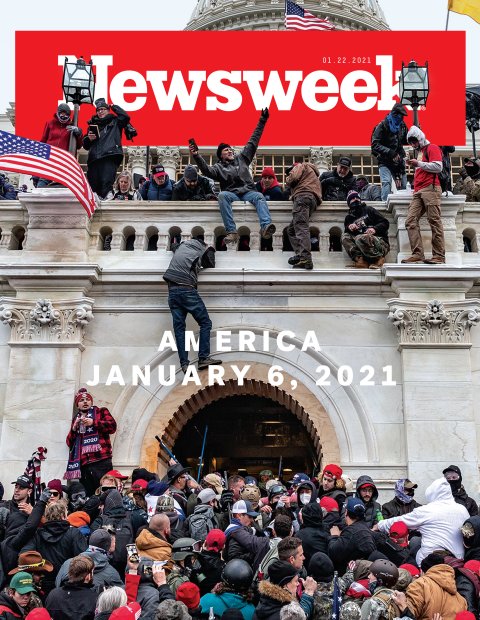
This story was updated on January 10, 2021, 9:27 p.m. ET.




